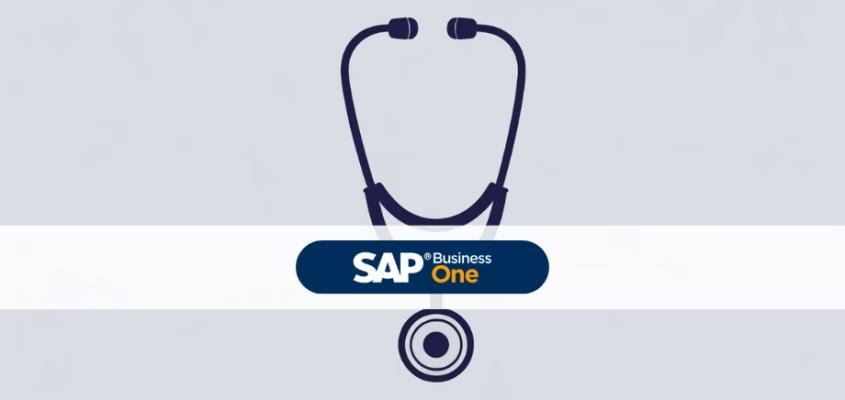Software plays a critical role in medical technology, as its reliability and safety can directly affect the health and lives of patients. To ensure that medical software fulfils the high requirements, thorough software validation is essential. But what exactly does validation mean in this context and why is it so important? What are the different aspects of software validation in medical technology and how can the findings be applied to ERP software validation, such as SAP Business One?
Validation vs. verification
Validation is often confused with verification, but there are significant differences. Verification refers to the confirmation that specified requirements are met, while validation ensures that the product is fit for purpose.
Verification:
- DefinitionVerification is the process of checking whether a product, system or component meets the defined requirements, specifications and standards.
- PurposeEnsure that the product has been developed and built as it was intended.
- MethodsInspections, tests, reviews, audits, technical inspections.
- TimingTypically takes place during the development and manufacturing phase.
- ExamplesChecking that a design conforms to specifications, performing functional tests to ensure that all components work as intended.
Validation:
- DefinitionValidation is the process of confirming that the end product or system fulfils the needs and requirements of the user in the real application.
- PurposeEnsure that the correct product has been built to fulfil the intended use and requirements in the intended environment.
- MethodsUser acceptance tests, clinical studies, end-to-end tests, field tests.
- TimingTypically takes place after completion of verification and before market launch or during use.
- ExamplesTesting a medical device in a real clinical environment to ensure that it is safe and effective for doctors and patients.
To summarise:
- Verification asks: Have we built the product correctly? - The focus is on the development process and compliance with specifications.
- Validation asks: Have we built the right product? - The focus is on end use and the fulfilment of user requirements.
Software validation
Who has to validate?
- Medical technology companyManufacturers of medical devices and software must ensure that their products comply with regulatory requirements.
- General IT and mobility areasValidation is also important here in order to guarantee the functionality and security of the software used.
In principle, anyone who uses software in a critical or regulated environment must carry out a validation. This includes
Why is software validation necessary?
The need for validation can be attributed to several main reasons:
- Regulatory requirements: In medical technology, standards such as the MDR (Medical Device Regulation) and the ISO 13485 of great importance. These standards stipulate that software must be validated before it is used.
- Product safetyTo minimise the risk of damage or even death, the software must be thoroughly tested. Non-validated software can have fatal consequences.
- Audit requirementsExternal audits check whether all necessary validation documentation is available. Missing documentation can lead to serious problems and sanctions.
What needs to be validated?
In medical technology, there are a large number of components that need to be validated:
- ProductsThis includes embedded systems such as hardware and software as well as combined systems. The validation of tools used in analysis, configuration management and quality control is particularly important.
- processesValidation of the processes that lead to the development and use of the software is just as important. This includes changes, deviations and documentation.
When is software validated?
Validation takes place in various phases of the software life cycle:
- Initial validationThis takes place before the first use of a new tool or software.
- Accompanying validationIf changes are made to the software or its operating conditions, a new validation is required.
- RevalidationPeriodic repetition of the validation ensures that the software continues to function correctly.
- Retrospective validationThis should be avoided as it is carried out retrospectively and is often not permitted.
How is the software validated?
Validation comprises various methods and approaches:
- Risk-based approachCritical components that affect patient safety are subject to special scrutiny. This is often done through a combination of tests and objective evidence.
- DocumentationDetailed documentation is essential in order to make the entire validation process traceable. This documentation must contain detailed information about the requirements, test cases and results.
- TestingPractical tests and inspections are an essential part of validation. They ensure that the software functions reliably under real conditions.
SAP Business One - Medical Technology
Specially developed ERP solution for small and medium-sized companies in the medical technology sector based on SAP Business One

SAP Business One Medical Technology is a customised ERP solution for medium-sized companies in the medical technology sector and related industries. This solution is based on the proven ERP system SAP Business One. It therefore offers a wide range of functions for automating and optimising all business processes. These include purchasing, sales, customer relationship management (CRM), warehouse management, requirements planning, production, financial accounting and reporting.
Additional external functions can be fully utilised through the optional integration of applications and devices. Thanks to the international orientation of SAP Business One, this solution is also ideal for globally active companies.
Conclusion on software validation
The validation of software in medical technology is a complex but indispensable process. It ensures that software products function safely and reliably and do not pose a risk to patients. By complying with regulatory requirements and carefully carrying out validation, medical technology companies can guarantee the quality and safety of their products.
Validation is not a one-off action, but a continuous process. It should be integrated from the outset during the introduction, operation and further development of the software. By taking a risk-based approach and utilising best practices, validation can be carried out efficiently and effectively.

Software validation in medical technology

AI for SAP Business One puts the user at the centre

MDR-compliant ERP solutions for medical technology

Manage SAP Business One access rights

No GoBD without process documentation


